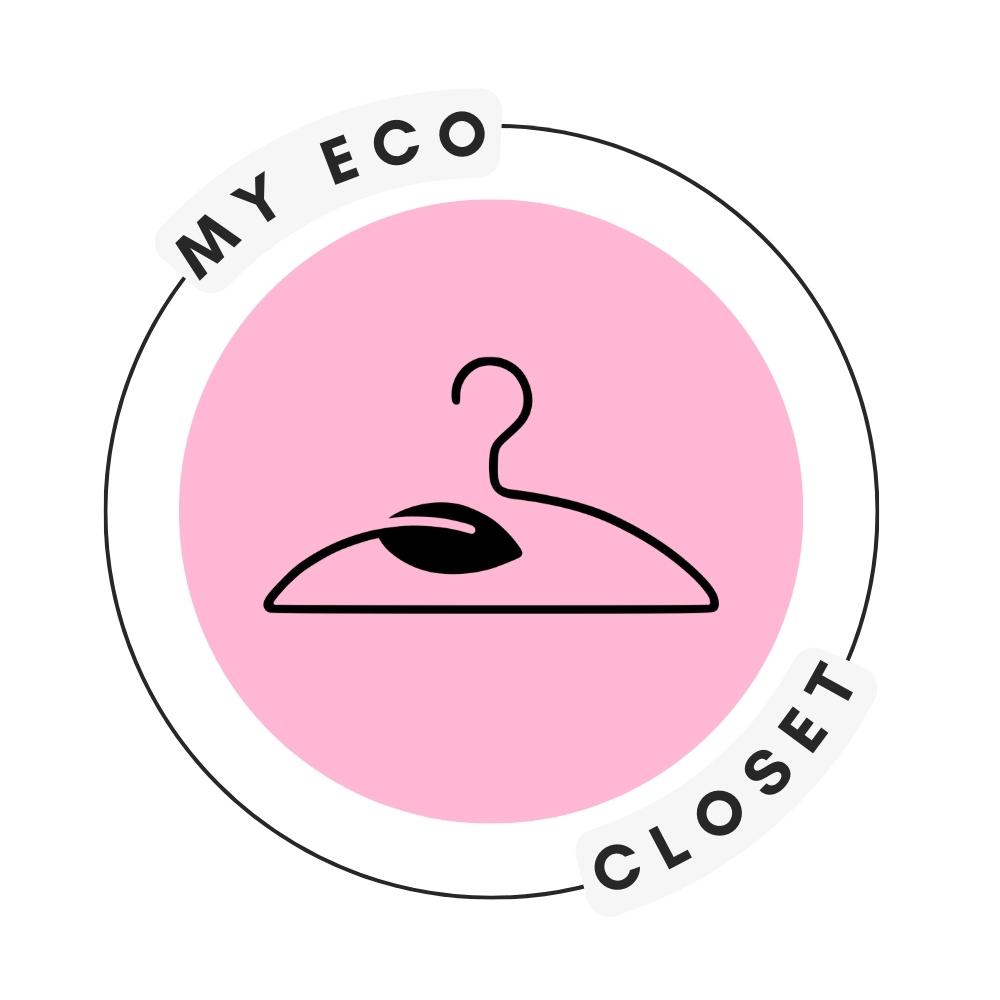The fast fashion world bombards us, everyday shoppers, with the latest trends, last-minute discounts, and magic fixes. It feeds us all kinds of fantasies, so that we make mindless purchases and keep chasing the next shiny object. Resisting this isn’t easy. However, as we break away from the trap of unnecessary purchases, it’s important to observe fast fashion consumerism through the lens of psychological motives.
In this guide, we’ll delve deep into our consumption habits and where they truly stem from. Without further ado, let’s dive right into it.
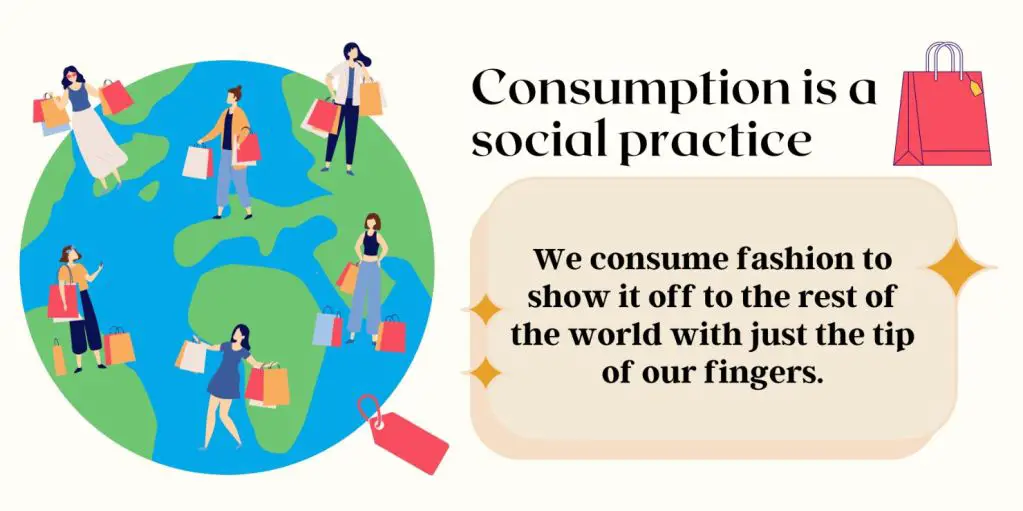
1. Consumption Is A Social Practice
With the rise of social media, fashion consumption is no longer limited to certain occasions. Rather, we can consume and showcase our clothes to the public – right through our devices.
Dressing up just to take pictures and post them online has turned into a modern-day pastime. And of course, it all affects the way we view fashion. “What aesthetic does this item make me fit in?”, “does this outfit look too casual?”, “have I worn this outfit twice on my feed?” – these are some of the questions that guide our thought processes when posting on social media.

The Rise of Microaesthetics in Fast Fashion
Facing a lot of scrutiny through the online audience, consumption becomes a social practice, transforming into a “routinized behavior” that involves “acquiring, using, or disposing of fashion items” (Vladimirova et al., 2022). Knowing this, fast fashion brands fuel the rise of ‘micro-aesthetics’, which resonate with the consumer’s online personality, impulses, and fantasies.
To illustrate, Cider offers a ‘pick a mood’ option on its website, where users can choose clothes that fit into their public digital identity. They can pick from “unbothered”, “grunge”, “nostalgic”, “free”, or “minimalistic” categories, generating outfits and looks that speak to their demographics, subcultures, and style preferences.
Why does Cider’s strategy work as a way to fuel fast fashion consumerism? The fast fashion audience seeks constant engagement from strangers on the internet. Posting photos of their outfits, they curate our image carefully and construct their identities through sartorial elements, and all of this is directed towards external validation.
Moreover, also known as ‘social shopping’, fast fashion brands often blur the line between shopping and social media. That is, what’s popular online often translates into their offerings. So, whether it’s influencer marketing, celebrity endorsements, or personalized shopping, fast fashion retailers keep consumers in the endless loop of browsing and purchasing.

2. We Buy Clothes to Be Accepted in Social Groups
Fashion-centric social media platforms, such as Instagram and TikTok, open a unique two-sided mode of communication. Users showcase their unique images and videos to receive comments from the audience, which prepares the groundwork for status-oriented consumption — bolstering the connection between fast fashion and consumerism.
Truly, social media has become a commercialized space for users to consume fashion — be it through fitness, travel, street style, music, or other niches. Staying up-to-date with the current trends, users flaunt their material possessions, establish their personal style, and make trendy lifestyle choices online. In return, they receive instant feedback in the form of likes, comments, follows, and overall engagement.
Fast fashion weaponizes this against consumers, enticing them with various status markers. To illustrate, the mission behind Temu, a ultra-fast fashion brand, “shop like a billionaire”, creates a false sense of bypassing socioeconomic constraints, ultimately, making consumers feel wealthy on a budget.
This, of course, makes consumers feel accepted — masking deeper issues, such as compulsive shopping behavior, low self-esteem, and deep-seated insecurities.

Fashion As A False Sense of Belonging
Ultimately, excess clothing allows us to fit in. The more we buy, the more we can showcase. Seeking complements and positive feedback, we all are tempted to follow trends and fit into the mold of what’s ‘in vogue’.
We yearn to feel well-regarded and appreciated by our audiences. This drives us to copy outfits off of Instagram and emulate digital influencers — completely losing track of our consumption habits.
According to Thorstein Veblen, fashion consumers seek to impress others through material possessions – in order to boost their social status. Other scholars also echo this sentiment, claiming that the fashion zeitgeist is what molds ordinary purchases. As Douglas & Isherwood mention, we don’t purchase expensive items for the sake of it, but rather for the social relations they bolster.
Hence, with all the curated content that circulates online, we can’t help but seek validation and a sense of belonging, leading us to follow on-trend, consumerist behaviors. This allows us to build a false sense of belonging, fulfilling the desire to feel current and to fit in.
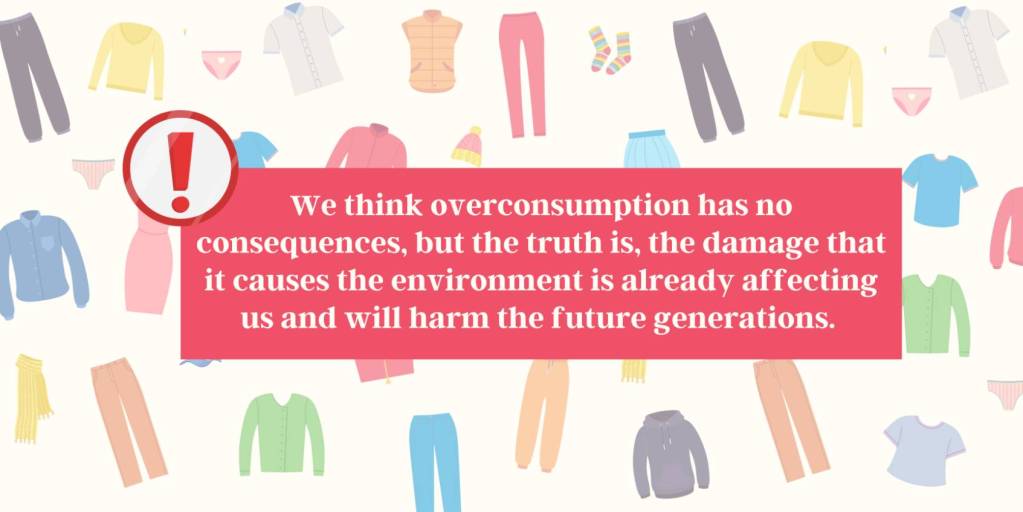
3. Fast Fashion Makes Us View Excess Consumerism As Harmless
Fashion retailers have brainwashed us into hoarding clothes in a selfish manner – with no regard towards the environment. Trend after trend, we are running on the hamster wheel of overconsumption, never asking ourselves, “how often should I buy new clothes?” or “is my wardrobe sustainable?” We adopt compulsive shopping as a habit, succumbing to the pressure of looking trendy 24/7.
Trends, and more specifically, “micro-trends” are like kryptonite for us, everyday shoppers. Once one new thing is out of style, a brand new trending article of clothing is all the rage. Even attempting to keep up with such cycles can result in overflowing wardrobes – full of clothes that become outdated in a few weeks.

4. We See Clothes As An Extension of Our Identities
How do we, humans, categorize ourselves in the world? how do we convey our opinions, values, or beliefs to others? As Calhoun mentions, self-knowledge “is never altogether separable from claims to be known in specific ways by others.” That is, the way people view us very much determines our self-perception and vice-versa.
This is where fashion comes into play, as it allows us to establish our identities without saying a word. That is, it tacitly communicates our tastes, social status, preferences, and even inclinations, helping us establish ourselves in the world.
What you wear is how you present yourself to the world, especially today, when human contacts are so quick. Fashion is an instant language.
Miuccia Prada
Let’s remember that humans are social animals. In the past, we used to live in tribes, sharing particular cultural or social frameworks with others. This gave us a sense of belonging, as we formed cohesive communities, established kinship, and attached our identity to the collective.
However, in the modern world, things have changed. Tribalism no longer reveals itself in the people that we live with, but rather visual elements of self-expression.
So, when exploring the relationship between consumerism and fast fashion, it’s crucial to acknowledge fashion’s role in identity creation and a myriad of ways, in which we relate to the world.

5. We Use Fashion As A Means to Establish Online Tribes
The rise of micro-aesthetics on social media is undeniable. Every internet demographic, or in other words, subculture, flaunts its distinct way of dressing – whether it’s dark academia, barbiecore, fairycore, grunge, Y2K, or ‘old money.’
Their aesthetic choices, coupled with certain settings, values, beliefs, and even hashtags, unite like-minded individuals. By this, they ultimately serve as modern-day tribes, in which humans bond through clothes, accessories, and even color schemes.
Put simply, we use clothes to tell people who we are, and in the world of social media, this takes the form of e-tribes — unofficial communities, where people share life experiences, authentic testimonials for products, and visual inspiration between each other.
On social media, you are what you wear, and this entails fitting into a distinct fashion aesthetic, that is, a style mentality – be it streetwear, minimalism, vintage, grunge, or avant-garde.
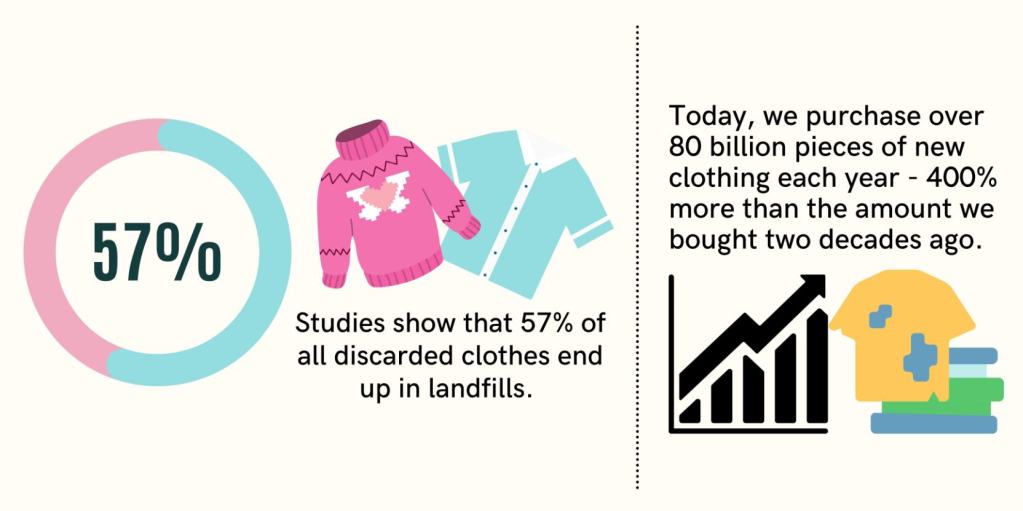
Has It Always Been This Way? The Origins of Fashion Consumerism
Around the 1980’s, the fashion world relied on basic fashion styles, such as button-down shirts, Levi’s jeans, and graphic t-shirts. With strict seasonal calendars, trends used to go through fashion executives, luxury buyers, and magazine editors before reaching the masses. Hence, fashion used to be more exclusive than it is today.
However, as retailers embraced globalized supply chains, coupled with the rise of online stores, fashion became more mainstream. Consumers started observing the latest trends and becoming more fashion-savvy, flocking to stores to fulfill their craving for novelty.
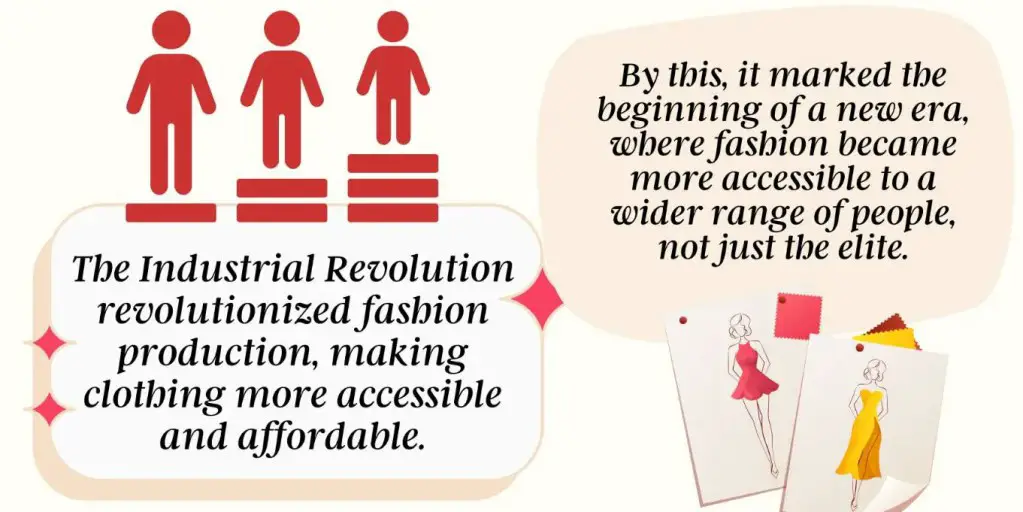
Fashion Democratization: How It Ruined Our Consumption Habits
Simply put, at some point in time, fashion became democratized and more ubiquitous. This, perhaps, is what led us to believe clothes are convenient and disposable, molding the fashion industry into a tragedy of the commons.
The fashion world opened the pandora’s box of resource exploitation, modern slavery, and environmental degradation, as it began making dirt-cheap clothes accessible to all. It let us view cheap garments as almost a public resource – the one that we can overconsume and throw away at our will.
After all, the convenience of ordering so much clothing online leads to the convenience of throwing it away fast. The idea that we don’t put any effort into creating, sourcing, or appreciating clothes leads to a separation from the consequences of consumption.

Motives Behind Consumerism in Fashion: The False Needs Theory
According to Herbert Marcuse’s ‘false needs theory’, corporations impose false needs upon consumers. They encourage shoppers to pursue things that go against their individual or collective benefit, perpetuating “misery and injustice.”
By the same token, disposable clothing is the superficial ‘false need’ that pollutes our oceans, exploits underpaid workers, and depletes non-renewable resources — the very false need that makes us dig our own graves.
Ultimately, the very ethos of fast fashion, “of the people, for the people, by the people”, is inherently against the planet.
Therefore, an obvious answer to the question, “why do we buy so many clothes” is that we simply can. However, as the saying goes, just because we can doesn’t mean we should. While clothes are here to serve us, we shouldn’t forget the very agents involved in their production, be it human or environmental, and how our consumption habits affect them.

Fast Fashion And Consumerism: Final Thoughts
Fast fashion is cheap, convenient, and disposable. With new collections being launched frequently, consumers readily hop on the fast-paced fashion cycle, often buying items quickly without giving it a second thought.
As fast fashion lures us into impulsive purchases, our shopping motives may vary. They may stem from unique our tastes, values, and aspirations, or perhaps, simply from the advertisements we encounter every day. However, there’s more to the picture.
We buy excess clothes to feel like we belong, boost our social status, and seek novelty. Research shows that psychological factors, such as social identity, need for uniqueness, and self-promotion, are what govern our fashion preferences and inclinations towards fast fashion consumerism.
Frequently Asked Questions
Fast fashion encourages compulsive shopping habits by constantly introducing new trends and promoting a sense of urgency to purchase. The rapid turnover of styles and the pressure to stay “on trend” can lead consumers to make impulsive purchases without considering the long-term consequences.
Social validation plays a significant role in consumerism in fashion, as consumers often seek approval and recognition from their peers and social media followers. The desire to fit in and be perceived as fashionable can drive individuals to purchase clothing items they may not need or truly want.
Psychological factors such as social identity, the need for uniqueness, and self-promotion play a significant role in driving consumer behavior towards fast fashion. Consumers may be motivated by the desire to express their identity, stand out from the crowd, or gain social approval through their clothing choices.
